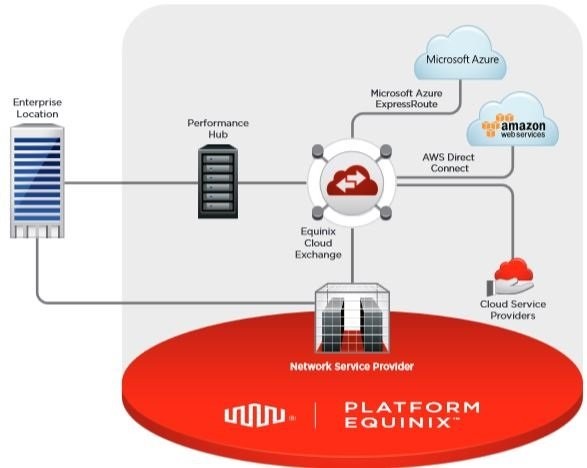Equinix Inc Downgraded By Wells Fargo But Is The Glass Actually HalfFull Equinix Inc (NASDAQ
Post on: 14 Июнь, 2015 No Comment

In the world of Wall Street, it is not uncommon for investment banks and sector analysts to have different points of view. In the case of global data center giant Equinix Inc (NASDAQ: EQIX ), though, weakness after a recent downgrade might be just what the doctor ordered for long-term investors.
On Tuesday, Wells Fargo downgraded Equinix from Outperform to Market Perform, lowering its price target range to $229-$244 from $241-$256. On September 10, Stifel resumed its coverage of Equinix with a Buy rating and a $260 price target.
A Few Back-of-the-Envelope Calculations
Based upon the $209.26 closing price on Tuesday, Equinix has an upside of 9.4 percent to 16.6 percent, according to Wells Fargo. The more optimistic folks at Stifel foresee an upside of 24 percent. The mid-point of the Wells target trading range would imply a 13-percent increase for Equinix shares.
Worth noting: The rationale for the Wells Fargo downgrade was that REIT conversion upside was already priced into shares.
How Does Equinix Compare To Its Closest REIT Peer?
Equinix currently has a market cap of $11.5 billion, making it the largest data center-focused REIT in a sector where $8.5 billion Digital Realty Trust (NYSE: DLR ) is currently the global leader.
Digital Realty has kept a closer eye on leasing out larger wholesale spaces, including several data centers where Equinix is currently a tenant. Digital has more than 600 global customers occupying over 24.5 million square feet of data center space.
By way of comparison, Equinix has historically placed a greater concentration on networks and connectivity. Equinix, in particular, has more than 4,500 global customers and is north of 135,000 connections (located in about one-quarter of Digitals square footage).
What REIT Status Means For Shareholders
The REIT structure allows companies to avoid taxation at the corporate level if they pay out at least 90 percent of taxable income in the form of dividends to shareholders. REITs must derive at least 75 percent of taxable revenue from real estate activities, as defined by the IRS, and must conform to a few additional rules and regulations.
Attractive dividend yields (of about 200 basis points or greater) versus the 10-Year Treasury Note coupon rate attracts a select group of income-oriented investors. Most likely, this subset of the market would simply not be interested in investing in the common shares of a company not paying out a competitive dividend.
REIT Approval Has Been A Long Process
However, the IRS approval process for Equinix to join the ranks of Digital Realty Trust has dragged on for about two years.
The IRS recently issued a positive private letter ruling approving the REIT conversion of Iron Mountain Corporation (NYSE: IRM ), a global business record storage company. This move, along with the recent Windstream and Lamar Advertising REIT approvals, is widely viewed as a positive for Equinix.

Special Distributions
In order to comply with IRS regulations, Iron Mountain has announced it will pay shareholders a special dividend of $3.62 per share, as well as a catch-up dividend of about $0.25 per share. This will allow Iron Mountain to file as a REIT retroactively to January 1, 2014.
Equinix has announced that it plans to file as a REIT on January 1 of next year. In a similar fashion, the company has earmarked between $700 million to $1.1 billion to pay a special dividend to its shareholders in order to comply with IRS regulations concerning its REIT status.
Final Thoughts
Regardless of how Equinix is structured, the company is well-positioned to take advantage of meta-trends, such as the growth of cloud computing and big data.
However, for a large number of investors, how and when this will translate into a steady and growing stream of dividend payments is the most crucial piece of the puzzle.
Disclosure: At the time of this writing, the author had no position in the equities mentioned in this report.














